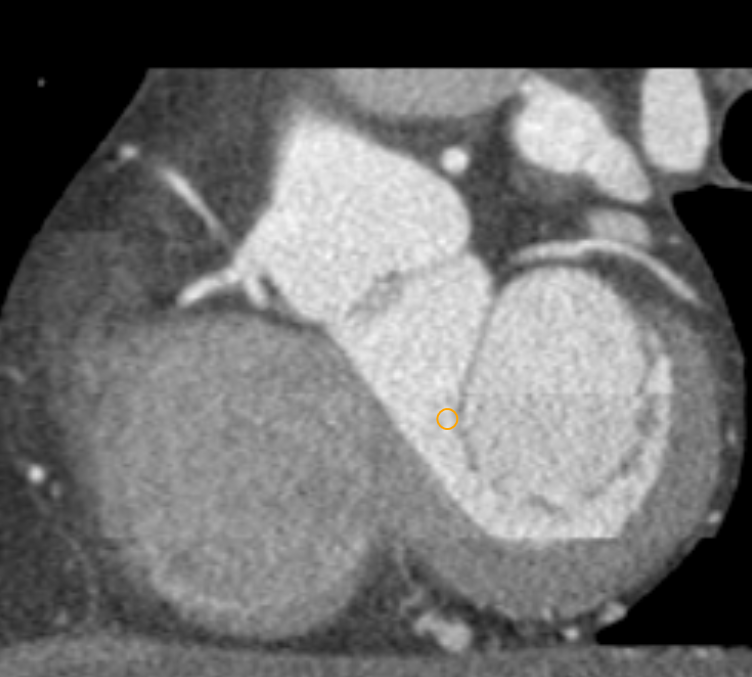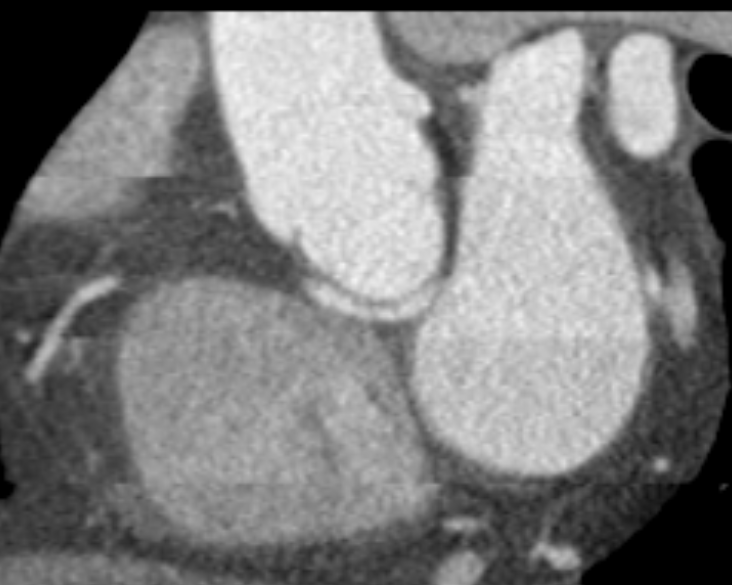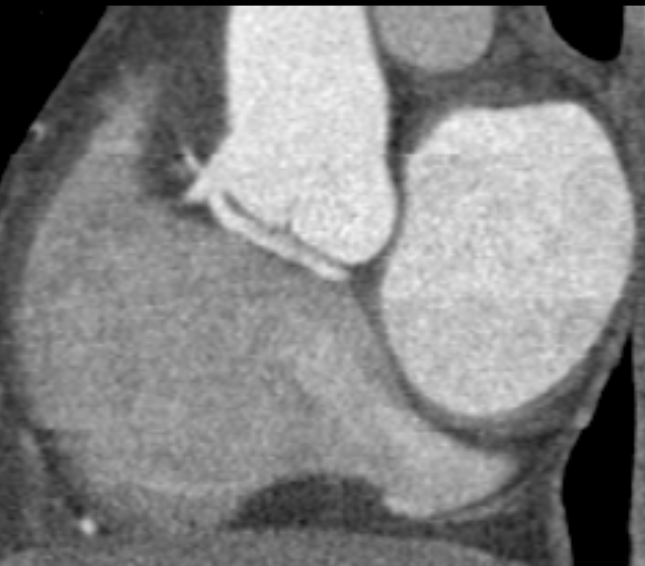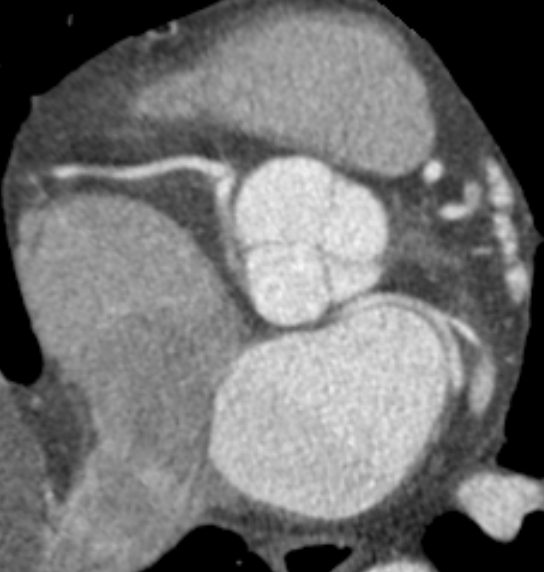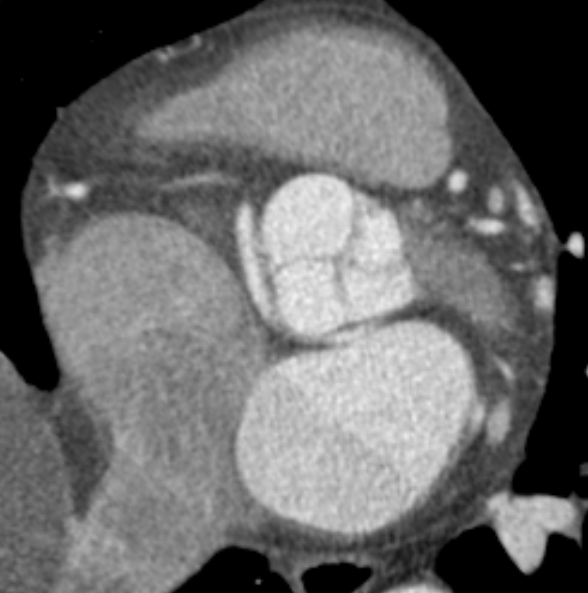A 40-year-old male presented with chest pain
FINDINGS
- Left circumflex artery (orange arrow) noted arising from right proximal coronary with no evidence of stenosis at its origin.
- The artery courses posteroinferior to the aortic root to re-enter the atrioventricular groove.
- Mild compression ( 25-49% stenosis) between the aortic root and inferior LA wall.
- The right aortic sinus (green arrow) and right coronary artery (blue arrow) are otherwise normal.
Diagnosis: Left circumflex arising from right coronary sinus
DISCUSSION: coronary arterial origin variant.
Epidemiology: Most common coronary anomaly with prevalence range of around 0.37-1.3 % of all patients.
Subtypes:
According to some publications, anomalous LCx is divided into 3 types 9
- type I: separate ostia for right coronary artery (RCA) and LCx
- type II: common ostia in the right sinus.
- type III: LCx arising as a branch of the proximal RCA.
Terminology of Anomalies of Course
Anomalies of course may be described using the following terminology :
- Type A: Anterior to the pulmonary artery, or pre-pulmonic course
- Type B: Between the aorta and pulmonary artery, or intra-arterial course
- Type C: Through the crista supra ventricularis; also known as intraseptal, septal, sub pulmonary course, or “tunneled”
- Through the right ventricular (RV) infundibulum
- Type D: Dorsal pathway, or posterior” or retro-aortic course
- Mixed
Significance
Although this anomaly is usually classified as benign and asymptomatic. There are occasional reports of sudden death, myocardial infarction, and angina pectoris in the absence of atherosclerotic lesions
REFERENCE:
- Plastiras SC, Kampessi OS, Gotzamanidou M, Kastanis P. Anomalous origin of the left circumflex artery from the right coronary artery: a case report. (2008) Cases journal. 1 (1): 336. doi:10.1186/1757-1626-1-336 – Pubmed
- Çitaku H, Kamberi L, Gorani D, Koçinaj D, Krasniqi X. Anomalous Origin of Left Circumflex Artery. (2015) Medical archives (Sarajevo, Bosnia and Herzegovina). 69 (6): 423-4. doi:10.5455/medarh.2015.69.423-424 – Pubmed
- Dursuno?lu D, Ozalp G, Ta?köylü O, Semiz E. Anomalous origin of the left circumflex coronary artery: A case report. (2007) Experimental and clinical cardiology. 12 (4): 207-8. Pubmed.
- Kim SY, Seo JB, Do KH, Heo JN, Lee JS, Song JW, Choe YH, Kim TH, Yong HS, Choi SI, Song KS, Lim TH. Coronary artery anomalies: classification and ECG-gated multi-detector row CT findings with angiographic correlation. (2006) Radiographics : a review publication of the Radiological Society of North America, Inc. 26 (2): 317-33; discussion 333-4. doi:10.1148/rg.262055068 – Pubmed
- Harmeet Kaur Rissam, Lalit Garg, Umesh Kumar Mittal, Satbir Singh. Uncommon variants of left circumflex coronary artery (LCX): evaluation with 256-slice dual source CT coronary angiography. (2015) BMJ Case Reports. 2015: bcr2015210495. doi:10.1136/bcr-2015-210495 – Pubmed
Dr. DEEPTI H.V
Consultant Radiologist
Manipal Hospitals Radiology Group(MHRG)
Manipal Hospital, Bengaluru.
Dr. Srinivas P
Fellow in Radiology
Manipal Hospitals Radiology Group(MHRG)
Manipal Hospital, Bengaluru.

